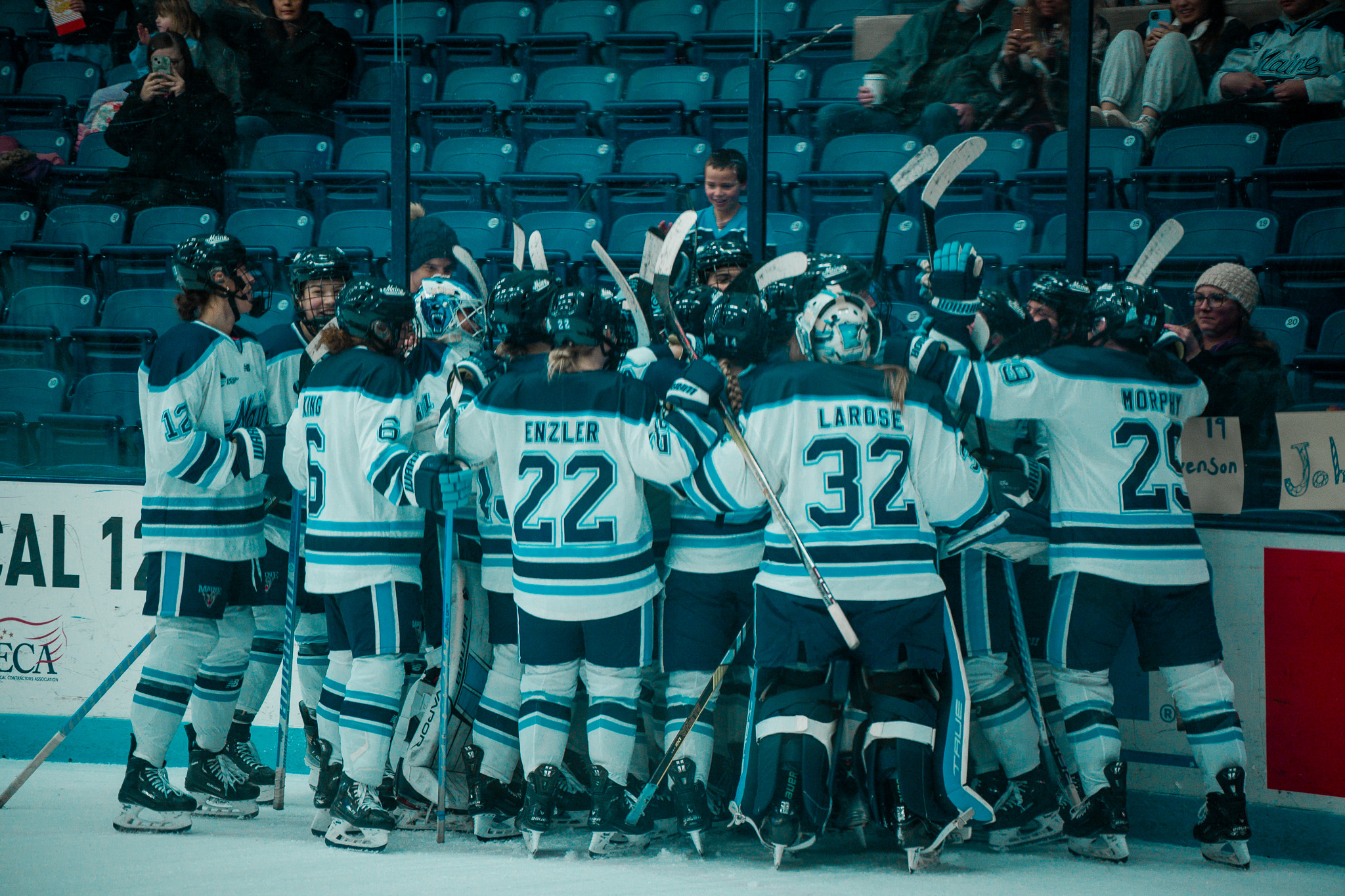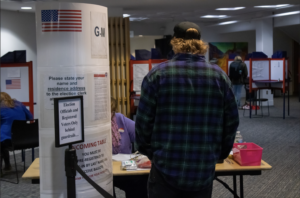For the first time ever next season, fans of women’s ice hockey will have to pay to attend a game at the Alfond Arena. While the home crowds at men’s ice hockey games are so intense that Providence College was reportedly playing to piped-in crowd noise during their recent practices ahead of their two-game series in Orono that took place last weekend, women’s ice hockey has been entirely free to the public since its certification as an NCAA team during the 1997-1998 season. That this development comes after a quarter-century of Division I women’s ice hockey at UMaine reflects broader disparities in the treatment of men and women’s sports in Orono and beyond.
The successful season of Maine men’s ice hockey has already been much-discussed, with head coach Ben Barr having been awarded a remarkably high $425,000 (and incrementally increasing) salary that will see him placed as the State of Maine’s highest-paid public employee. Maine’s rebound to the top of the Hockey East rankings has been rousing, and you’d be hard-pressed to find any avid fan of Black Bear sports who hasn’t waited outside the Alfond at least once this year. But men’s ice hockey has never seen these same hurdles in terms of achieving high audience attendance numbers. While the team is seeing its most promising season in many years, with UMaine men’s hockey tickets selling out for the first time in at least a decade, their comparative lack of success in the past few years did little to decline their attendance rates.
In 2021-2022, when Black Bear men’s hockey went 7-22-4 (.273), they saw an average attendance rate of 68%. The average attendance of women’s hockey, which went 15-19-1 (.429), was 4.1%. In 2022-2023, when men’s hockey went 15-16-5 (.486), the average attendance was 70.7%. Women’s hockey, which went 15-18-2 (.429), saw a marginal increase to 4.7% attendance—30th of NCAA’s 41 Division I teams. Even when women’s teams are better than the men’s teams or witness equal success, their games see lackluster attendance by UMaine students and the general public.
The disparity in Maine’s hockey programs reflects a longstanding nationwide pattern of undervaluing women’s sports compared to men’s sports. Women players in the WNBA receive only 50% of the league’s incremental revenue (meaning money earned above the league’s target revenue goals), while men’s basketball players receive 50% of all revenue, regardless of how it is earned by the league. Similar stories are seen throughout college and professional sports, with the American women’s soccer team that had been dominant for several years successfully reaching a settlement with the United States Soccer Federation over their unequal compensation agreement.
That is not to say that women’s sports are undervalued everywhere, or that there is no evident positive trend in the right direction. Iowa basketball player Caitlin Clark has become a genuine phenom, with her fantastic play (that last week broke the NCAA all-time scoring record for women’s basketball) seeing Iowa sports continually shatter in-person attendance records for the entire league. Television viewership has also been bolstered by Clark’s performance, with just short of 4 million viewers tuning in on Feb. 3.
That said, Clark is a superstar who hails from a preexisting athletic powerhouse school, one that produced the winningest NCAA men’s wrestling program in history and supplied two first-round draft picks in the last NFL draft alone. Maine will never see the same financial support or huge enrollment as Iowa, nor will it likely ever capture a record-shattering titan like Clark, but it shouldn’t need to. Anyone who has attended a women’s hockey game can tell you that those games reached the same pitched heights as the men’s games and are just as suitable for displays of school pride.
UMaine alumni are renowned for their feverish devotion to this university’s men’s hockey teams. We should extend that same enthusiasm to their women’s team counterparts.






